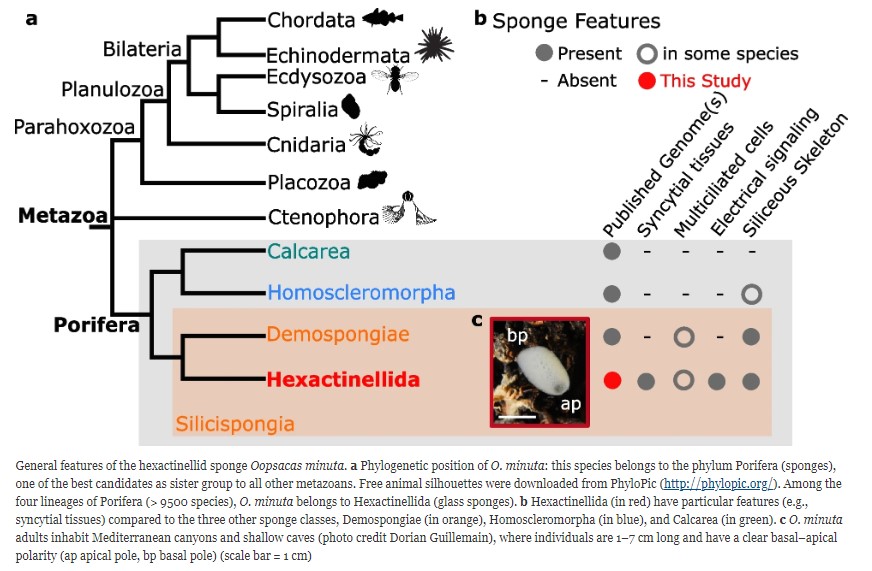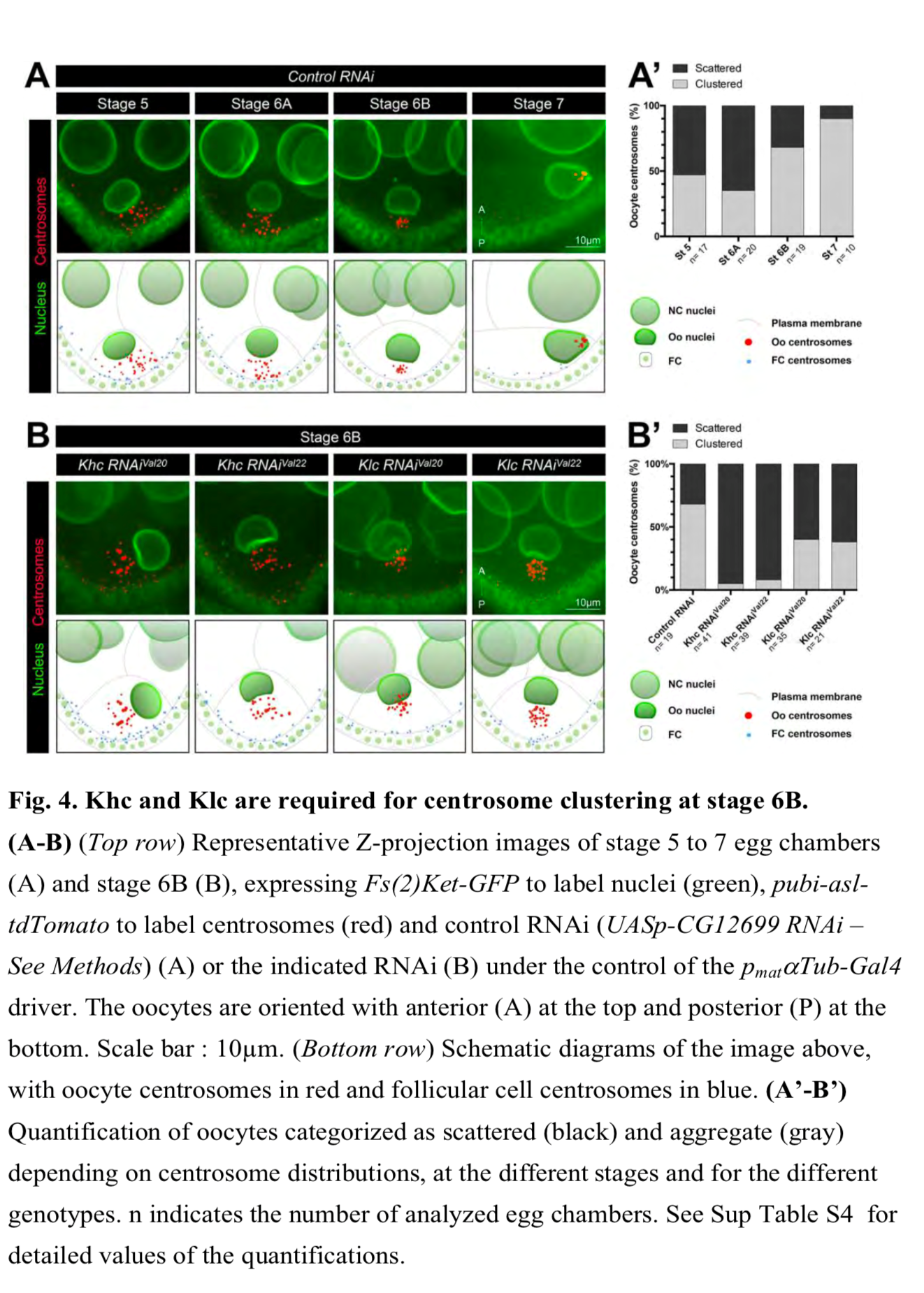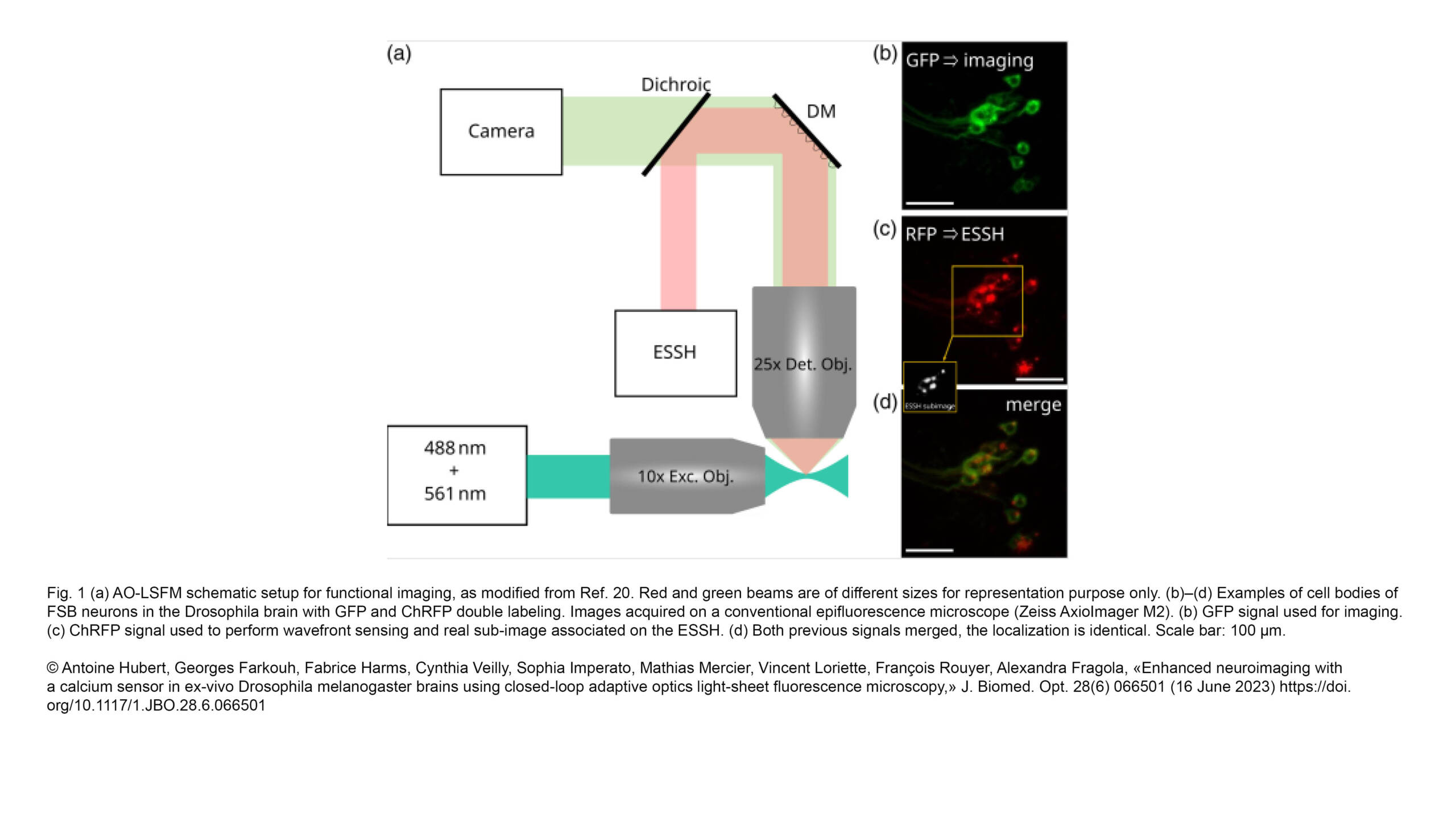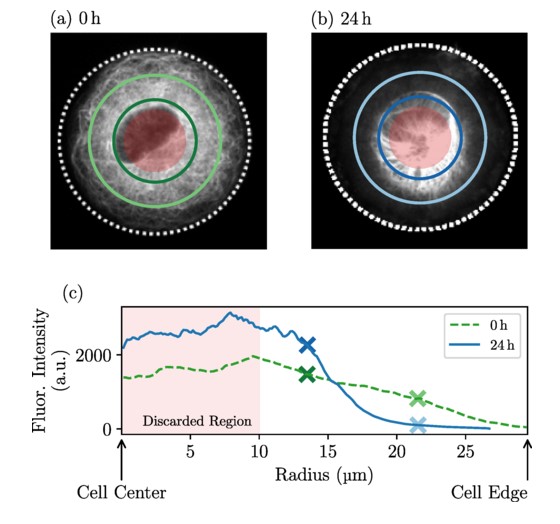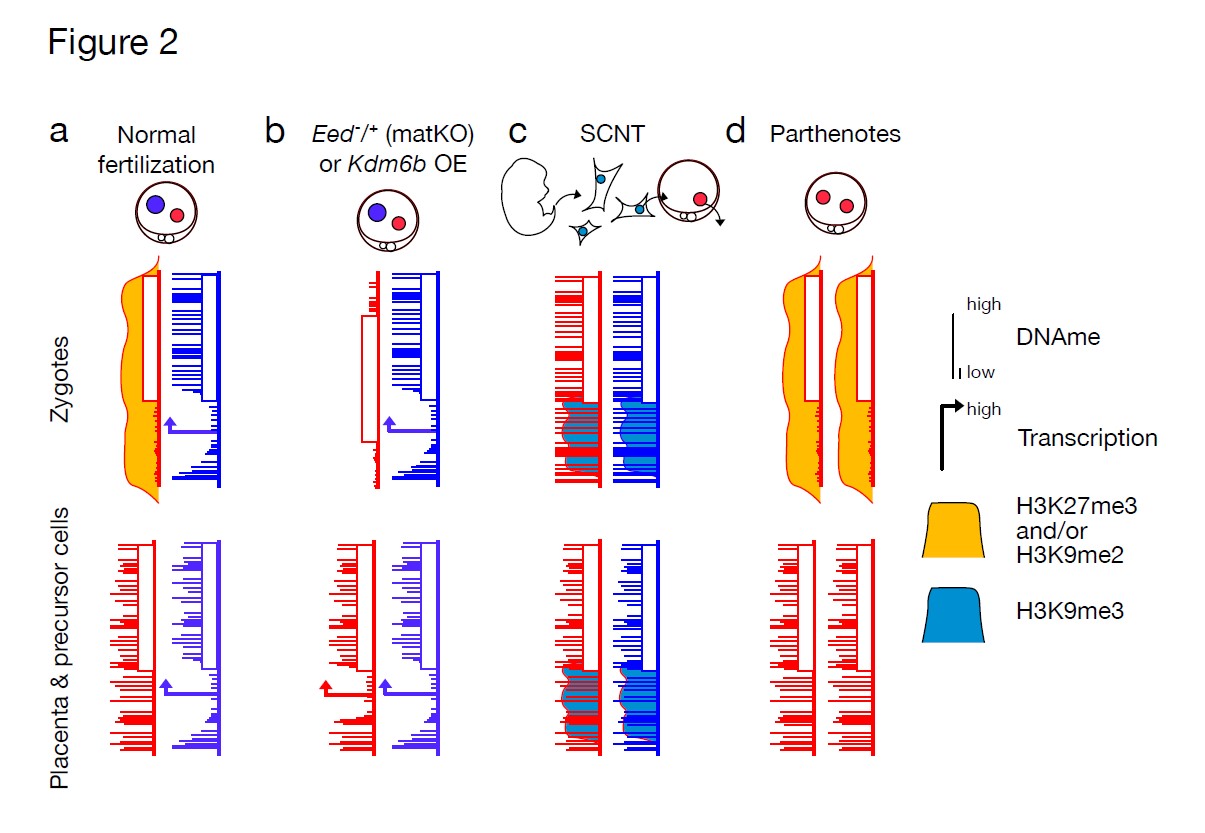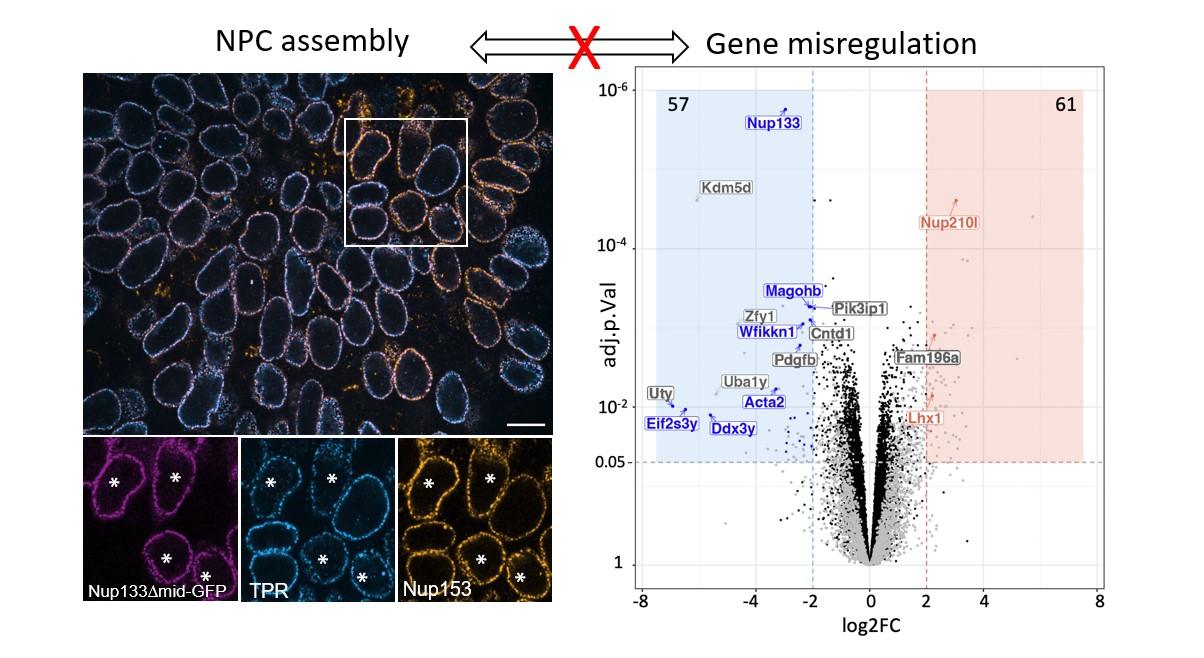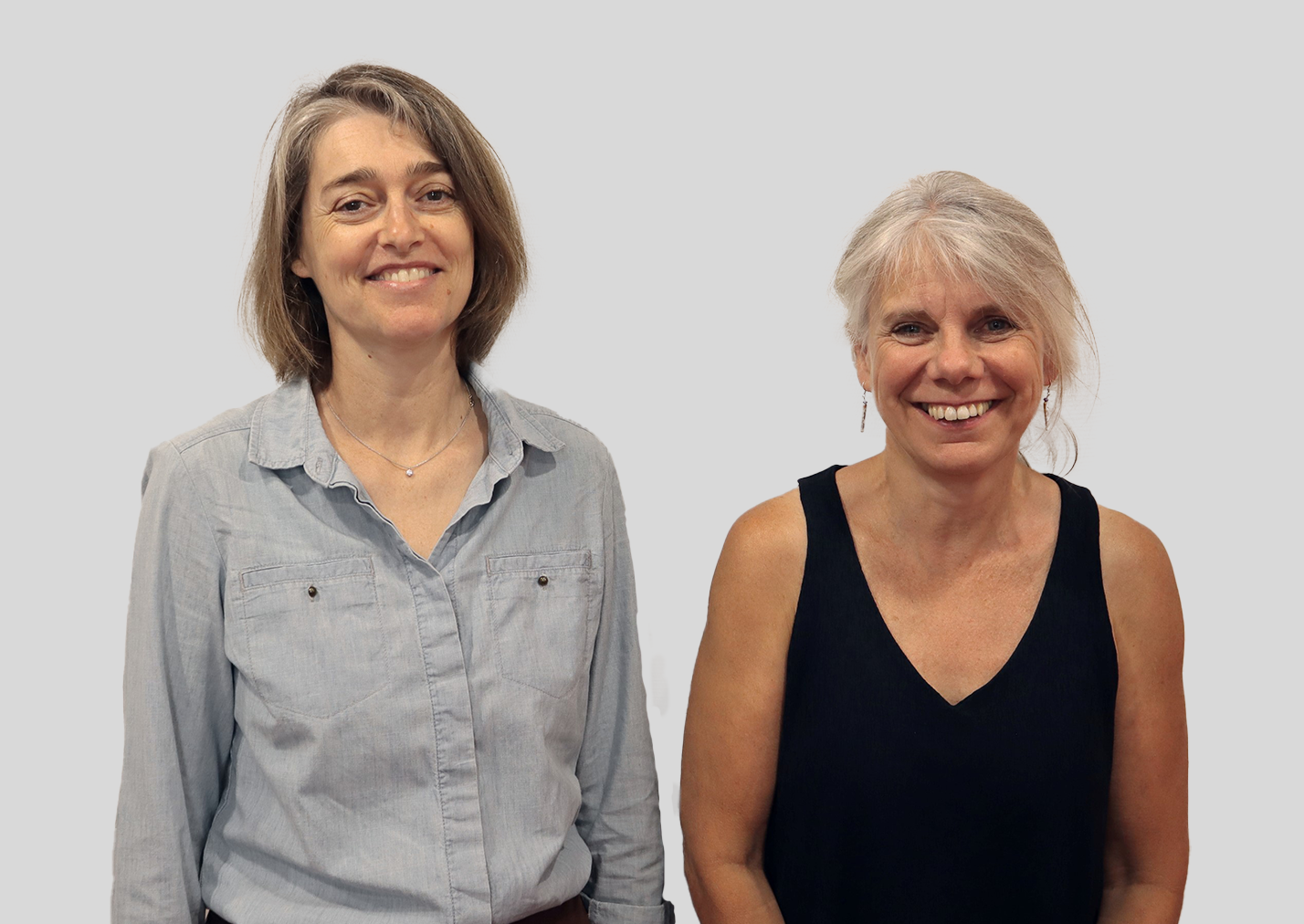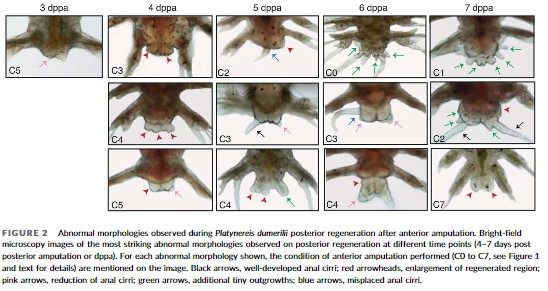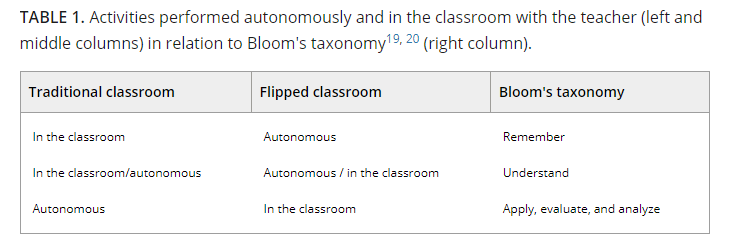The Gazave Lab recently published in BMC Biology :
The compact genome of the sponge Oopsacas minuta (Hexactinellida) is lacking key metazoan core genes
Abstract:
Background
Explaining the emergence of the hallmarks of bilaterians is a central focus of evolutionary developmental biology—evodevo—and evolutionary genomics. For this purpose, we must both expand and also refine our knowledge of non-bilaterian genomes,…
